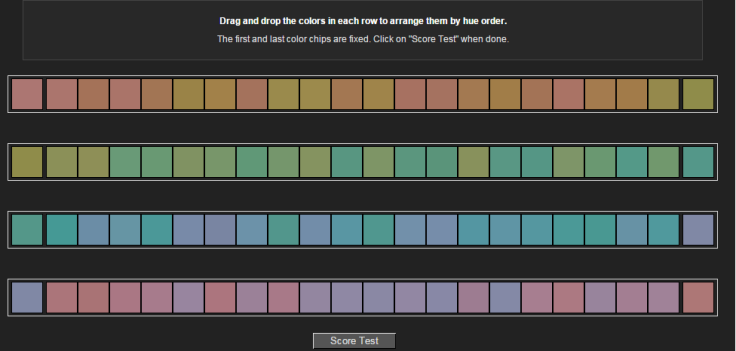Color Blind? Take This Online Color Challenge To Find Out How Well You See Color

Diagnosing a color vision deficiency usually requires a series of tests using pictures of numbers subtly hidden in colored dots dubbed pseudoisochromatic testing plates. While this may be effective in identifying the presence of this visual condition, additional testing is needed to determine the degree of a person’s color deficiency. To help you decide how well you see color, take the online color challenge through X-Rite’s Farnsworth Munsell 100 Hue Test.
One out of 255 women and one out of 12 men have some form of color vision deficiency, X-Rite reports. This online color challenge requires users to arrange four rows of various color shades into hue order based on the color they see. The lower the score, the better the color vision, with zero being a perfect score. A bar graph also shows which regions of the color users are most deficient in.
According to the American Optometric Association, color vision deficiency is the inability to distinguish certain shades of color or, in rare cases, see color at all. Although this visual condition is also known as “color blindeness,” very few people are completely color blind. Color deficiency tends to be an inherited condition; however, specific disease can also result in a loss of color recognition, including diabetes, glaucoma, Alzheimer’s disease, Parkinson’s disease, multiple sclerosis, and leukemia.
Take the Farnsworth Munsell 100 Hue Test here.



























